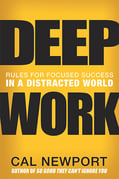In part two of our introduction to How Children Succeed: Grit, Curiosity, and the Hidden Power of Character we explored the cognitive hypothesis, which suggests that success today depends primarily on cognitive skills (e.g., reading, writing, recognizing patterns, calculating, etc.) the type of intelligence that gets tested on IQ or standardized tests, and that the best way to build these skills is to practice them as early and often as possible.
In part three, we’ll explore one of the major themes of the book, which is that “character,” and more specifically “performance character” is the more fundamental driver of success, and it too can be nurtured and developed. Tough believes society has gotten significantly off track, focusing too much on building a narrow set of cognitive skills and abilities, and taking a misguided approach to teaching children how to build all-important “character” skills.


 Most students don’t realize how small, incremental improvements can accumulate over time to create significant jumps in skill level or academic performance.
Most students don’t realize how small, incremental improvements can accumulate over time to create significant jumps in skill level or academic performance.